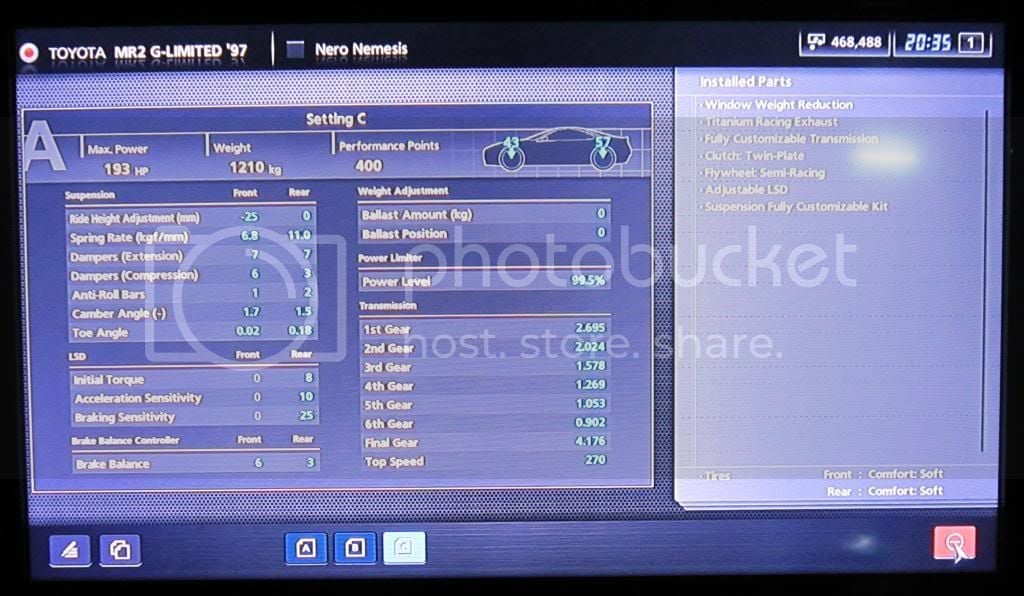- 7,711

- Indiana-USA
- OwensRacing
http://www.turnfast.com/tech_handling/handling_weightxfr
Good read. Notice more links at that top.
I applied some real world shock tech I had researched last night. Dropped a second and made my car sooooo much better. placebo? I dont think so, I was slipping off Suzuka every other lap. Changed the shocks relevant to springs and instantly driving like a Super GT in my RX7 TC. No offs or even close. Can't wait to race the car today.
placebo? I dont think so, I was slipping off Suzuka every other lap. Changed the shocks relevant to springs and instantly driving like a Super GT in my RX7 TC. No offs or even close. Can't wait to race the car today.
Just gotta try things and what works stick with it.
Good read. Notice more links at that top.
I applied some real world shock tech I had researched last night. Dropped a second and made my car sooooo much better.
 placebo? I dont think so, I was slipping off Suzuka every other lap. Changed the shocks relevant to springs and instantly driving like a Super GT in my RX7 TC. No offs or even close. Can't wait to race the car today.
placebo? I dont think so, I was slipping off Suzuka every other lap. Changed the shocks relevant to springs and instantly driving like a Super GT in my RX7 TC. No offs or even close. Can't wait to race the car today. Just gotta try things and what works stick with it.
 anyone can explain??
anyone can explain?? 


